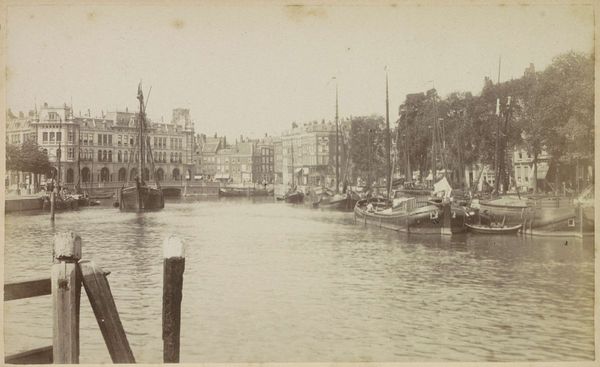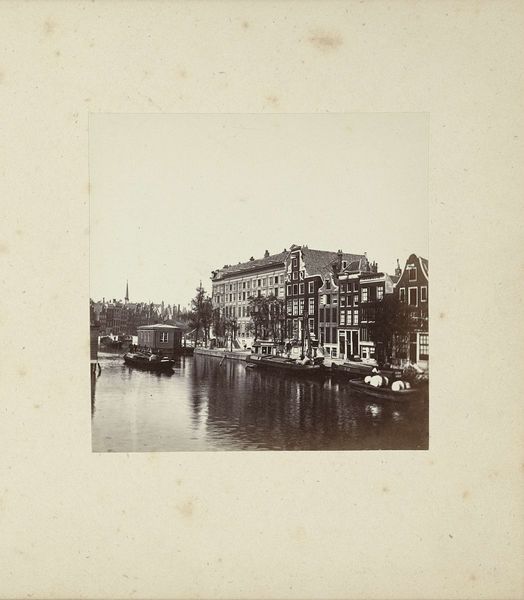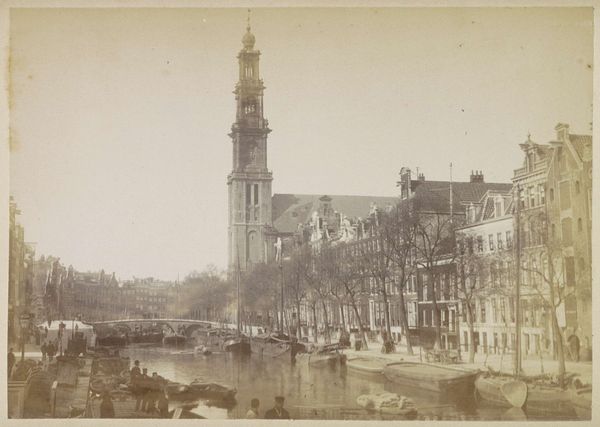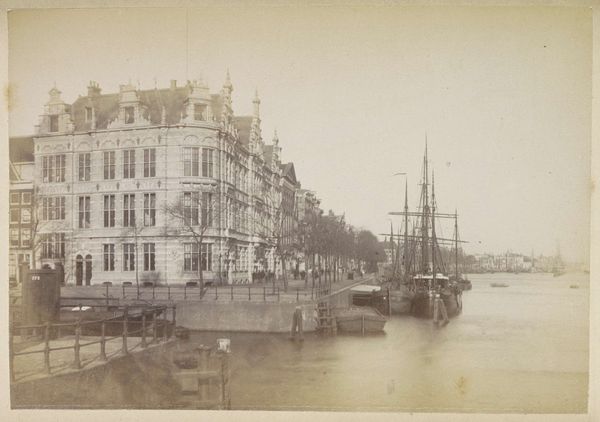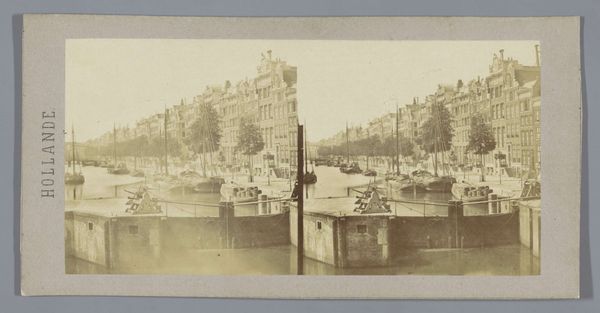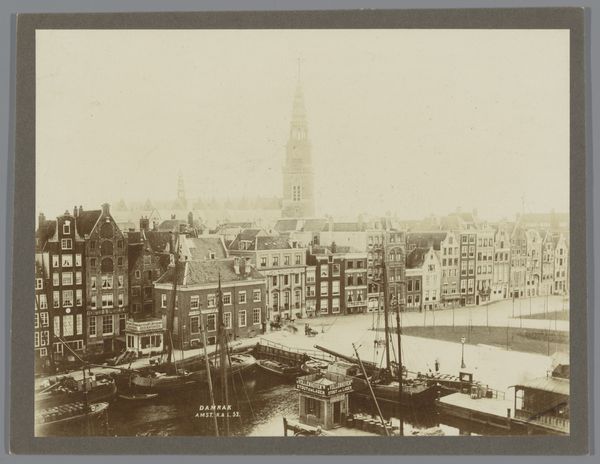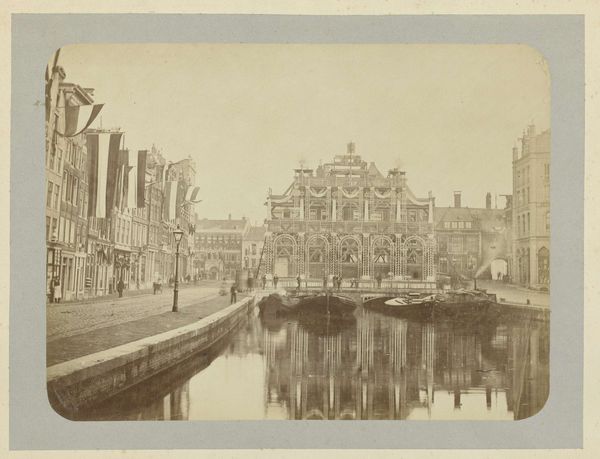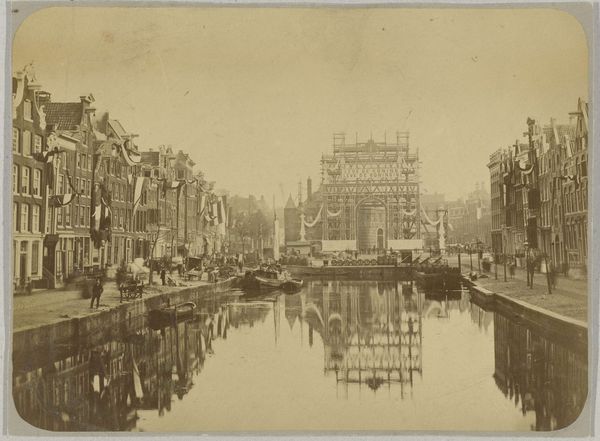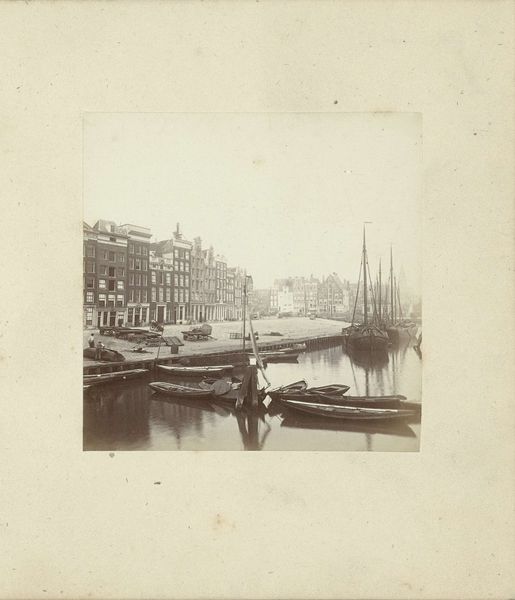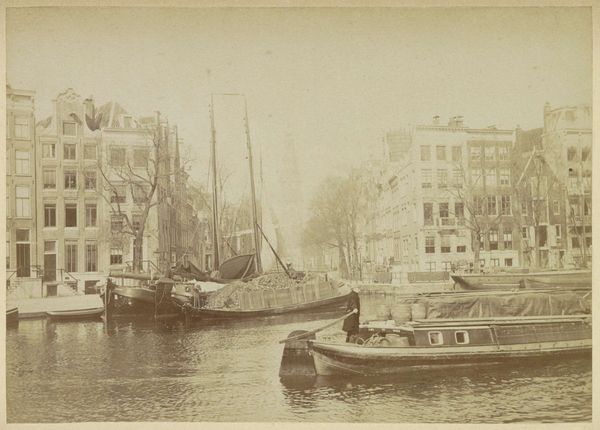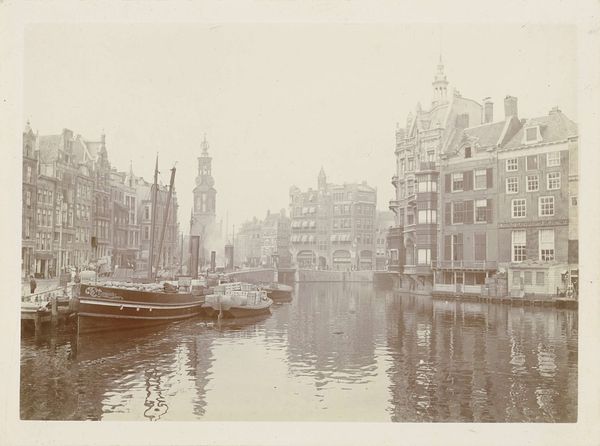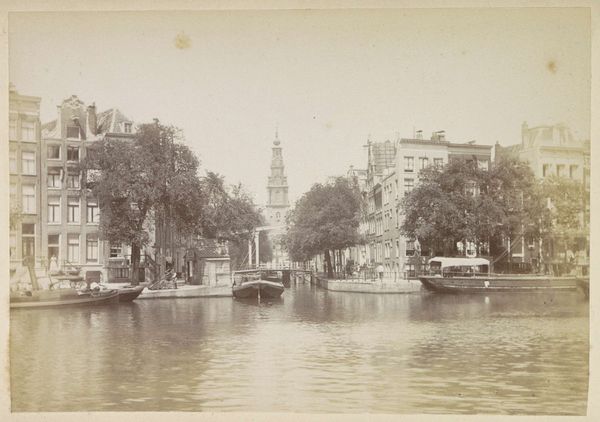
Gezicht op het Singel met in het midden kerk De Krijtberg c. 1881s - 1891s
0:00
0:00
photography
#
dutch-golden-age
#
landscape
#
photography
#
cityscape
#
realism
Dimensions: height 97 mm, width 135 mm
Copyright: Rijks Museum: Open Domain
Curator: Before us is an image taken sometime in the 1880s or early 1890s titled "Gezicht op het Singel met in het midden kerk De Krijtberg", or, in English, "View of the Singel with the Krijtberg Church in the Middle" Editor: My first impression is how muted the tones are, almost dreamlike. The sepia feels like a veil, obscuring the sharpness and imbuing a sense of nostalgia. The composition is so calm with that careful symmetry—everything leads toward that central church. Curator: That visual order does echo broader socio-political currents of the time. Photography like this wasn’t just capturing a scene; it was participating in the construction of civic identity, solidifying the perception of Amsterdam as orderly, prosperous, and religiously significant. Editor: The church is the undeniable focal point, but notice how the buildings are mirrored along the canal. It is perfectly still water and it creates almost a Rorschach effect, highlighting structure above all. Curator: Consider how that emphasis might be reinforcing existing power structures. The Church’s visual dominance mirrors its social and moral authority during this period. Editor: I'd argue that the materiality adds another dimension. This isn't just about the buildings, but about the interplay of light and shadow across surfaces, that stillness that evokes a specific, tangible atmosphere. Curator: True. It reminds us how visual representations can serve very specific ideological purposes, framing the city—and perhaps the era—in a particular light, or, should I say, specific shades of sepia? The lives of ordinary people who were, without a doubt, living quite different realities than that which is presented here, are entirely left out of the image. Editor: But by emphasizing those formal elements—composition, texture, and tonality—the photograph also stands as an artifact capturing a unique moment of urban development and visual perception. Curator: Indeed, this photographic portrayal offers an opportunity to critically engage with how urban spaces were imagined and marketed, both then and now. Editor: Absolutely. Thinking about light, composition, and texture heightens one’s appreciation.
Comments
No comments
Be the first to comment and join the conversation on the ultimate creative platform.
